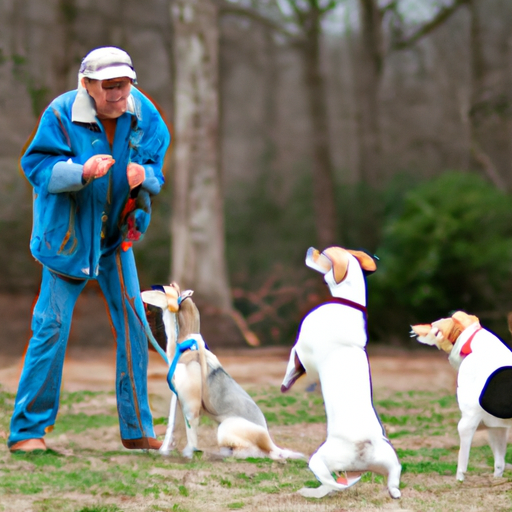As a caregiver, you play a vital role in the well-being and development of your pet. One of the most important skills you must master is getting your dog’s attention. This article provides an in-depth guide to help you achieve just that.
1. Understanding the Basics
Before you can effectively get your dog’s attention, you must first understand the basic principles of dog psychology. Dogs are social creatures, and they thrive on interaction and communication. Therefore, it’s essential to establish a strong bond with your dog.
- Trust: Your dog should trust you implicitly. Establishing this bond can be achieved through regular interaction, feeding, and grooming.
- Consistency: Dogs respond best to consistent training. Use the same commands and actions each time you want your dog’s attention.
- Reward: Positive reinforcement is key. Reward your dog for responding to your commands promptly.
2. Training Your Dog to Respond to Their Name
One of the simplest ways to get your dog’s attention is by using their name. Here’s a step-by-step guide on how to do this:
- Choose a quiet environment to begin training.
- Say your dog’s name in a clear, upbeat tone.
- As soon as they look at you, reward them with a treat or praise.
- Repeat this process over several days until your dog consistently responds to their name.
3. Using Visual Signals
Visual signals can be very effective in getting your dog’s attention, especially if your dog is far away or in a noisy environment. These signals could include hand gestures or even visual aids like toys or treats.
Here’s a table to illustrate some common visual signals and their corresponding commands:
| Visual Signal | Command |
|---|---|
| Pointing to the ground | Sit |
| Waving your hand | Come |
| Holding your hand up | Stay |
4. Implementing Recall Training
Recall training is teaching your dog to come to you when called. It’s an essential skill for all dogs and can be lifesaving in dangerous situations. Here’s how to do it:
- Start in a safe, enclosed area.
- Call your dog’s name and say “come.”
- Reward them as soon as they come to you.
- Practice this repeatedly, gradually increasing the distance between you and your dog.
5. Utilizing Distraction Training
Distraction training involves teaching your dog to focus on you, even in the presence of distractions. This can be challenging but is essential for your dog’s safety and obedience.
Here are some steps:
- Start training in a quiet, distraction-free environment.
- Gradually introduce distractions, such as toys or other people.
- Reward your dog when they remain focused on you, despite the distractions.
FAQs
Q: How long should each training session be?
A: Each session should last about 10-15 minutes. It’s more beneficial to have multiple short sessions throughout the day than one long session.
Q: What should I do if my dog doesn’t respond to their name?
A: Be patient and consistent. If they don’t respond, try again in a few minutes. If your dog consistently doesn’t respond, it might be worth consulting with a professional dog trainer.
Q: Can I use a whistle for recall training?
A: Yes, a whistle can be an effective tool for recall training, especially for long distances or in noisy environments.
Q: How can I keep my dog’s attention during training?
A: Keep training sessions short and fun. Use high-value treats, and change your training location often to keep your dog interested.
Q: What if my dog is too distracted for distraction training?
A: Start with minimal distractions and gradually increase the level of distraction as your dog improves.
Remember, every dog is unique and what works for one might not work for another. Stay patient, consistent, and positive, and you will see progress.



